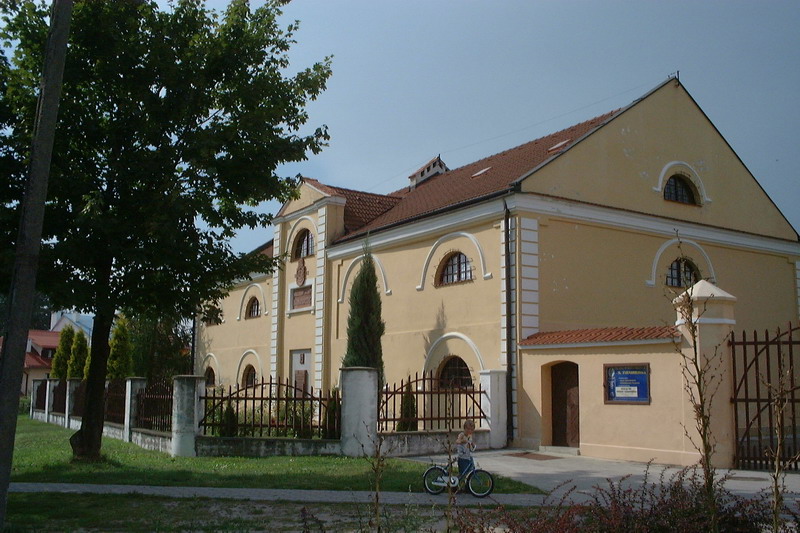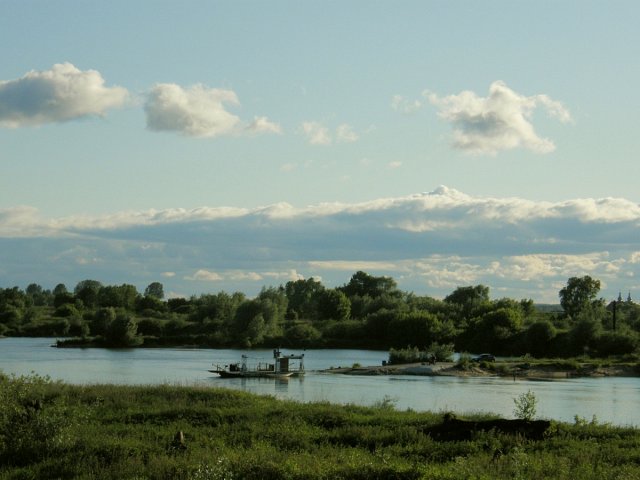Tarnobrzeg

Urban History Museum in Tarnobrzeg, decorated in an old grain store. – Photo by; Merlin, Poland Tarnobrzeg Museum, CC BY-SA 3.0
Distance
Population
48.000 (2014)
Location and history
Tarnobrzeg is located in southeastern Poland, in Podkarpacie County. The town is located on the river Wisła, which forms a boundary between Podkarpacie County and Holy Cross County (Województwo Świętokrzyskie).
Around the year 1000, a smaller settlement was found in Miechocin (now part of Tarnobrzeg), where a wooden-built chapel was later erected. It is known that in 1132 there was a Catholic congregation in Miechocin. In 1160, the foundation-walled Church of Mary Magdalene was erected in Miechocin instead of the old chapel of wood.
In the 15th year. a castle was built in the village of Dzików, today a district in Tarnobrzeg.
At the beginning of the 16th century, during the Reformation movement, the church in Miechocin was taken over by the Calvins. In 1522, the nobleman Jan Tarnowski bought Dzików, and here he applied for the king's permission to establish a city. This permit was issued on May 28, 1593 to Stanisław Tarnowski by Zygmunt III (“of God's Mercy King to Poland, Grand Prince to Lithuania – etc.”). At the same time, the king granted the new city market town rights, including the right to 2 weekly markets and 2 annual markets.
Around 1645 the castle of Dzików was rebuilt. In connection with the Counter-Reformation came the Dominican Order in 1670’the Tarnobrzeg. In the 17th century. began the Jewish settlement in the city.
At Poland's first division in 1772, Tarnobrzeg came under Austria-Hungary as part of the province of Galicia.
In 1862, the city was hit by a major fire. During World War I, significant destruction of the city occurred in 1915 in connection with an offensive by the Russian army. In November 1918, a peasant uprising took place with the aim of setting up a council republic by pattern from Russia. The Republic of Tarnobrzeg was formed; its territory lay at the junction of the rivers Wisła and San. Already next year, however, the republic was disbanded after the Polish army invasion and the area was incorporated into the new Polish state.
During the German occupation of World War II, a ghetto was established between 1941 and 1942 for the Jewish population. In 1939, Jews made up 67% of the total population. 1944, the city was liberated by the Soviet army.
In 1953 sulfur deposits were discovered at Tarnobrzeg. In the following years, a rapid development of the city occurred, new residential neighborhoods were built, and the sulfur industry expanded. From 1975 the new Tarnobrzeg county served. In 1976, 9 larger or smaller villages around Tarnobrzeg were incorporated into the urban area, including Miechocin and Nagnajów.
During 1990’the sulfur extraction is stalled, which has negative consequences for the development of the city. By municipal reform in 1999, the city became an independent urban district and at the same time the seat of the administration of a larger district (powiat), now as part of the new large county in the country's southeast: Podkarpacie.
Andrzej Mleczko , draftsman, painter, illustrator, was born January 5, 1949 in Tarnobrzeg. He is best known for his satirical drawings.
Tourist attractions
Selected attractions:
Castle / Castle in Dzików
The history of the castle dates back to the 15th century, when it was built as a fortified castle. In the 17th and 18th centuries, the castle was rebuilt by the genus Tarnowski. the fortification was increased by bastions.
In 1830, the castle was rebuilt into a neo-Gothic residence, partly with museum features. The Tarnowski family put together in the castle their extensive collection of works of art, their library and archives. The library contained many invaluable manuscripts, including the manuscript “Pan Tadeusz” by Adam Mickiewicz. The art collection included a self-portrait by Rembrandt.
During World War II, the collections were widely distributed, primarily to the National Library, the National Museums of Kraków and Warsaw and others. Today, some of the collections have been returned to the Historical Museum of the City of Tarnobrzeg with a seat at the castle in Tarnobrzeg-Dzików.
The castle burned in 1927, leaving some of the works lost. The reconstruction was completed in 1931, this time in the neobarok style. The castle is on two floors with a main wing and two side wings, framing the castle space in front of the main wing. In the middle of the main wing is a four-story gate tower with a clock.
A thorough renovation was completed in 2011, making the entire building a museum. From 2011, the castle is the seat of the Historical Museum of the City of Tarnobrzeg. The former headquarters of this museum was taken over by the Muzeum Polskiego Przemysłu Siarkowego (Museum of the Polish Sulfur Industry) – as a section of the Historical Museum.
Dominican Order Church and Monastery
is from the end of the 17th century. The first wooden church was built in 1677. The complex is located on Kościuszko Street.
Dominican Nuns Chapel and Monastery
from the middle of the 19th century.
Museum of the Polish Sulfur Industry
(Muzeum Polskiego Przemysłu Siarkowego) is housed in the city's historic museum's former building.
Tarnobrzeg lake
Tarnobrzeg Lake, immediately south of the Miechocin district (on the right river bank) is an artificial lake, a water reservoir, formed by flooding the former sulfur mine with a flow from the Wisla River and a drain to the same river.
In 1992, the extraction of sulfur that had occurred in open fractures ceased. Shortly after, the idea of a lake where the abandoned mine had been came up. First, the mine bottom was covered with an insulating layer to avoid any contamination of the water. Likewise, the pages were appropriately profiled and reinforced. The intention was to create a water reservoir with an area of approx. 500 ha. and a depth of about 40 m. The intention of the lake was to create a recreation area for the inhabitants and tourists. In 2001, a channel was dug from Wisła to the lake to fill it up. Between 2005 and 2010, the artificial lake was gradually filled with water from the river. Soon after, in 2010, the area was made available to all interested parties. The lake has become very popular for sailing people and growers of windsurfing. In addition to this, divers come from all over the country to enjoy the clean and clear water (class 1 in terms of purity).
Between the river and the lake, road # 871, here called Wisłostrada, runs in a north-south direction.
St. Mary Magdalene's Church in Miechocin was built around 1160, long before Tarnobrzeg as such existed. Until 1922 it was the parish church for the entire city. The first building was of wood. The walled church was built in the middle of the 14th century. At a renovation in 1930’under the old floor tiles in the main ship, the crypt was found with the body of a little girl, very well preserved (it was subsequently moved to the choir). The side chapel and tower were only built after the First World War.
Surrounding Area

A ferry heading across the river Wisła at Tarnobrzeg. – Photo by: Roberto Reale on Flickr
The river Wisła has its run in a south-north direction just west of the Tarnobrzeg urban area.
At Tarnobrzeg there is no bridge over the river, but there is a ferry connection to the village of Ciszyca on the other side. The road connection being interrupted by the river. is the road no. 758. The ferry sails all year and on all days of the week from 7 am. 6 am to 9 pm, in winter however from 6 am to 6 pm.
The nearest bridge is south of Tarnobrzeg at the village of Nagnajów. Here, Highway 9, E371, is transferred.
Accommodation
Booking.com
Tarnobrzeg – with practical information for tourists
Eating Out:
Tarnobrzeg – with practical information for tourists
Other Internet sites and sources
Translated into English by Google Translate. Spangshus.dk accept no liability for any errors or omissions in translation.
Map

Rating
Search
Most used tags
churches (205) Castles (86) Monasteries (79) Town walls (74) Lakes (71) Town halls (67) Rivers (65) Castles1 (62) Mansions (55) Museums (51) Regional museums (38) Town gates (36) Abbey churches (35) Castle ruins (30) Cathedrals (26) Forests (25) Health resorts (24) Water sports (23) Mounds (23) National parks (22)Click for all tags
Denne side er også tilgængelig på dansk. This page and contents is (c) Copyright 2018- www.spangshus.dk. Based on Inviator software by ISCA Software